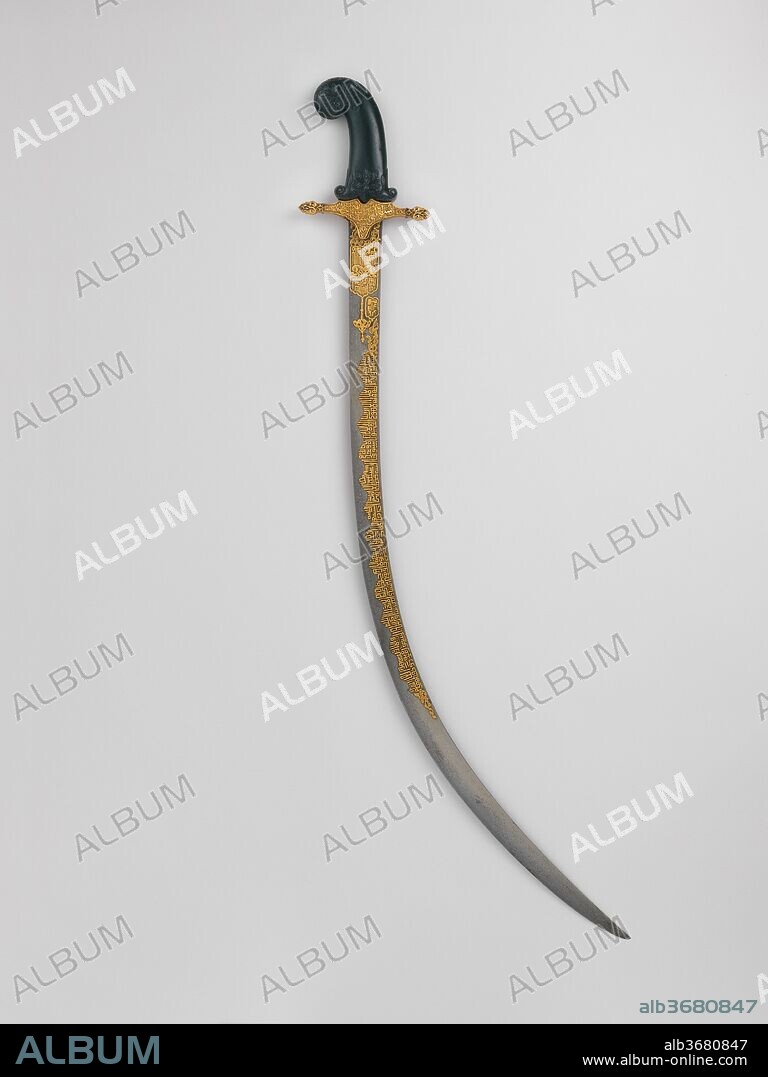alb3680847
SABER

|
Ajouter à une autre Lightbox |
|
Ajouter à une autre Lightbox |



Avez-vous déjà un compte? S'identifier
Vous n'avez pas de compte ? S'inscrire
Acheter cette image

Titre:
SABER
Légende:
Voir la traduction automatique
Saber. Culture: blade and guard, Turkish; grip, Indian; blade, possibly Iranian. Dimensions: L. 36 7/8 in. (93.7 cm); L. of blade 30 5/8 in. (77.7 cm); Wt. 2 lb. 1 oz. (935.5 g). Date: blade and guard, 19th century; grip, 18th century.
Swords are appropriated through the recycling of materials and as spoils of war. Therefore it is no surprise that this sword has a precious Mughal grip made of black jade and a gold Ottoman guard that reads in naskhi script: "Sultan son of Sultan son of Sultan son of Suleiman Khan"; and on the back: "the name of God most compassionate and merciful." Although the name of an Ottoman sultan appears on the guard, it is not an indication of the provenance of the sword.
Islamic devotional inscriptions dominate the decorative motifs of arms and armor. Efficacious prayers protect the soldier from the evils of war. The inscriptions on the elegant steel blade indicate the sword's talismanic function. In square kufic script, the inscriptions state the proclamation of faith along with the valuable Qur'anic Throne verse (2:255), all damascened in gold. The back of the blade, in gold, is stamped with the Seal of Solomon (a six-pointed star) and various cartouches invoking the name of God.
Technique/matériel:
Steel, jade (nephrite), gold
Musée:
Metropolitan Museum of Art, New York, USA
Crédit:
Album / Metropolitan Museum of Art, NY
Autorisations:
Modèle: Non - Propriété: Non
Questions sur les droits?
Questions sur les droits?
Taille de l'image:
3151 x 4200 px | 37.9 MB
Taille d'impression:
26.7 x 35.6 cm | 10.5 x 14.0 in (300 dpi)
Mots clés:
 Pinterest
Pinterest Twitter
Twitter Facebook
Facebook Copier le lien
Copier le lien Email
Email
